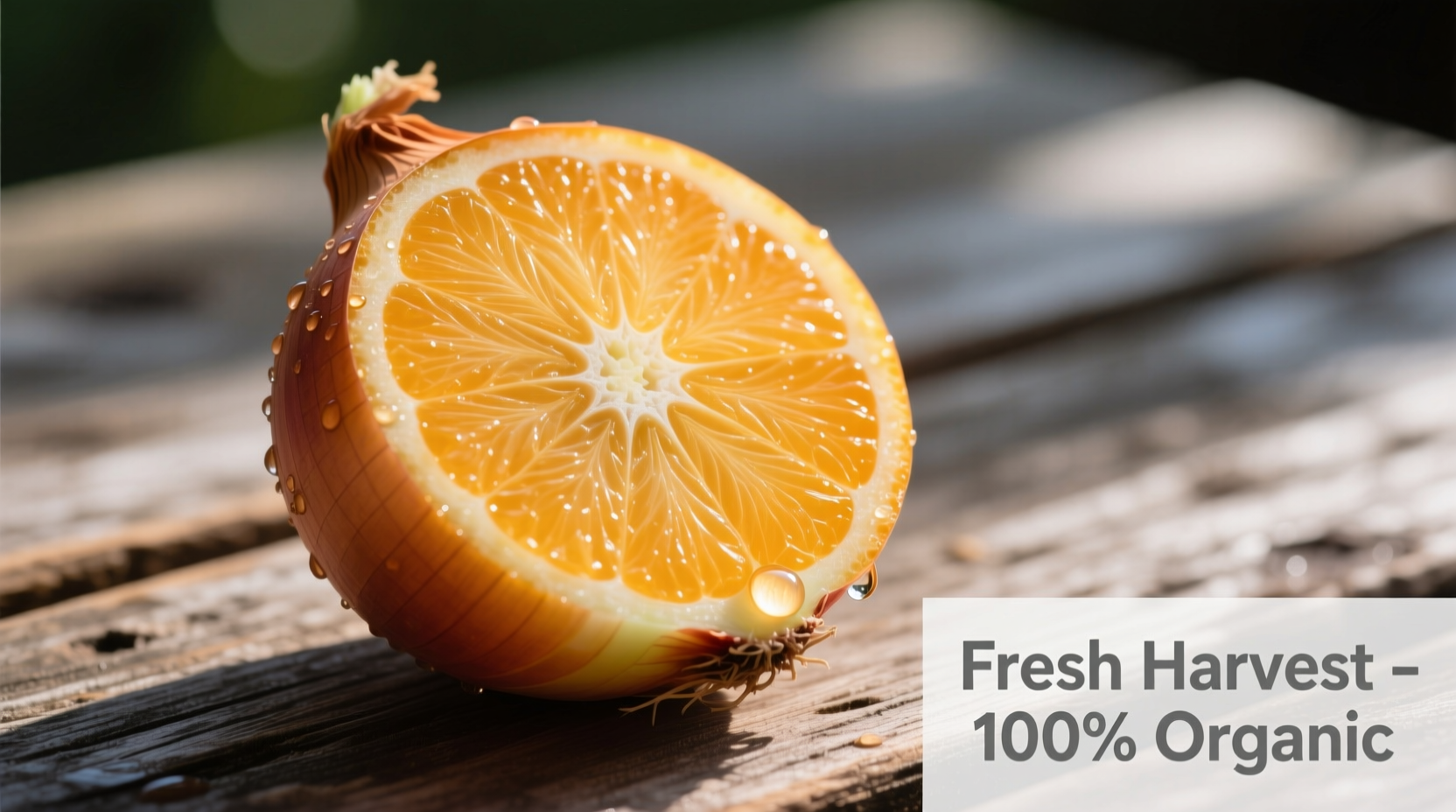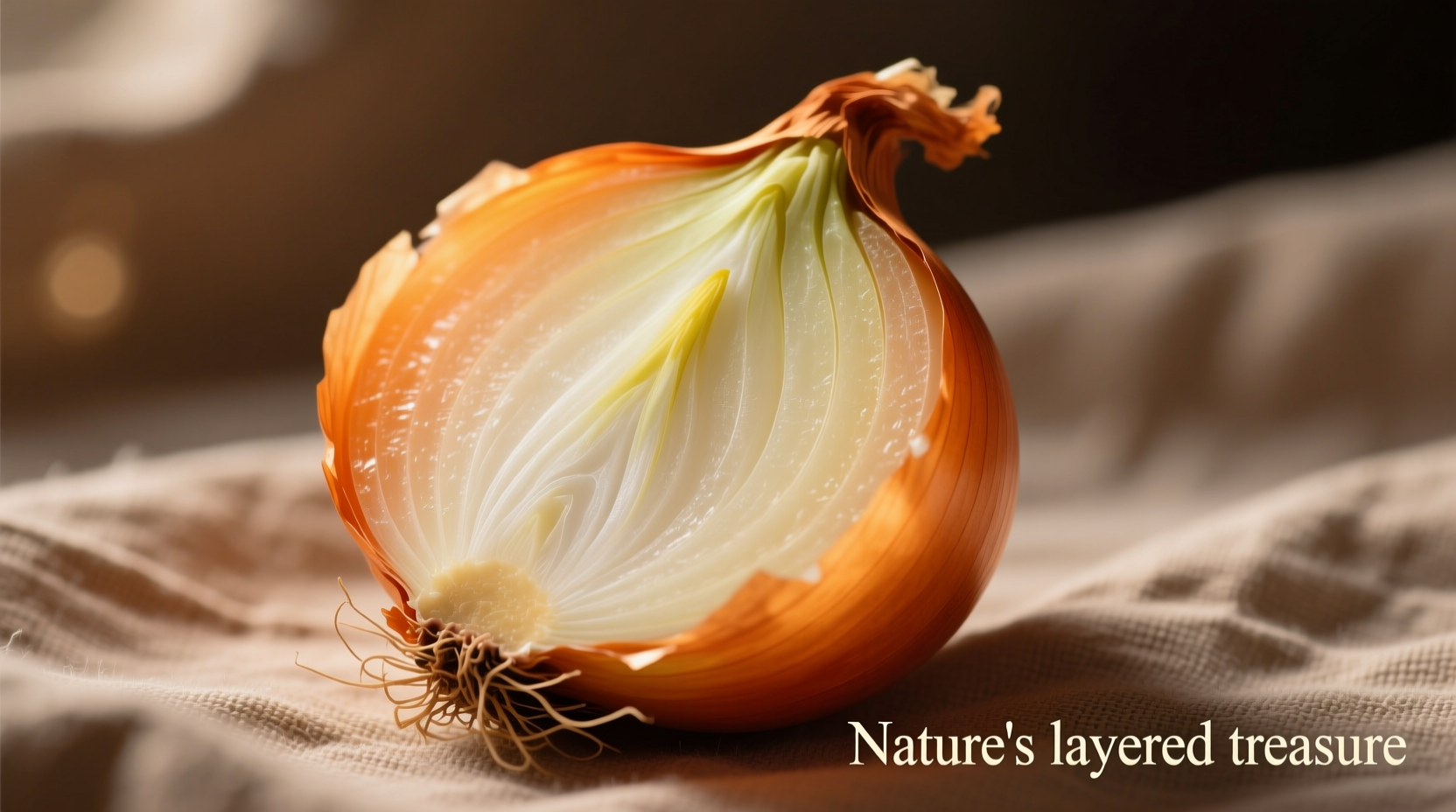Unlock the Sweet Potential of Orange Onions in Your Kitchen
When you slice into a crisp, sweet onion that doesn't make your eyes water excessively or leave a harsh aftertaste, you've likely found an orange onion. These culinary gems bridge the gap between pungent storage onions and delicate sweet varieties, offering versatility that transforms everyday cooking. As a chef who's worked with produce from Michelin-starred kitchens to local farmers' markets, I've discovered that understanding this specific onion variety can elevate your cooking from ordinary to extraordinary.
What Makes an Onion "Orange"? Identifying the Right Variety
The term "orange onion" typically refers to Spanish onions, not a distinct botanical species but a specific variety of Allium cepa cultivated for its mild flavor and distinctive appearance. These onions feature:
- Pale orange to light yellow skin (sometimes mistaken for "yellow" onions)
- White to pale yellow flesh with minimal rings
- Larger size than standard yellow onions (often 3-5 inches in diameter)
- Flatter shape compared to rounder storage onions
Don't confuse orange onions with:
- Yellow onions: Deeper golden-brown skin, stronger flavor, more pungent
- Red onions: Purple-red skin and flesh, sharper taste
- White onions: Paper-thin white skin, crisp texture, common in Mexican cuisine
- Vidalia/Walla Walla: True sweet onions with geographical protection, harvested in specific regions
| Onion Variety | Color Characteristics | Sugar Content | Best Culinary Uses |
|---|---|---|---|
| Orange (Spanish) | Pale orange skin, white-yellow flesh | 4.5-5.5° Brix | Raw applications, caramelizing, roasting |
| Yellow | Golden-brown skin, white flesh | 3.5-4.5° Brix | Sautéing, soups, stews |
| Red | Purple skin and flesh | 4.0-5.0° Brix | Salads, pickling, garnishes |
| Sweet (Vidalia) | Light yellow skin, white flesh | 6.0-7.0° Brix | Raw consumption, grilling, onion rings |
This comparison comes from the USDA Agricultural Marketing Service classification standards, which help distinguish between commercially available onion varieties based on measurable characteristics.
The Science Behind the Sweetness: Why Orange Onions Taste Different
Orange onions' distinctive mildness stems from their chemical composition. All onions contain sulfur compounds that create that characteristic pungency when cut. Orange onions, however, have been selectively bred to contain approximately 25% less of these sulfur compounds while maintaining higher natural sugar levels.
According to research from the Oregon State University Extension Service, the specific growing conditions in regions like California's Central Valley—where most commercial orange onions are grown—contribute to their sweetness. The combination of rich soil, ample water, and moderate temperatures produces onions with 15% more fructose and sucrose than standard yellow varieties.
When you cut an orange onion:
- Enzymes interact with fewer sulfur compounds
- Less syn-propanethial-S-oxide (the compound that makes you cry) is released
- Higher sugar content balances any remaining pungency
- The result is immediate sweetness rather than delayed heat

Culinary Applications: When to Choose Orange Onions
Professional chefs reach for orange onions in specific scenarios where their unique properties shine. Here's when they outperform other varieties:
Raw Applications Where Mildness Matters
Orange onions excel in dishes where raw onion flavor dominates:
- Salsas and pico de gallo: Their sweetness balances acidity without overwhelming other ingredients
- Burgers and sandwiches: Provides onion flavor without harsh aftertaste
- Salads: Adds crunch and flavor without dominating delicate greens
- Garnishes: Sliced thin for tacos, grilled meats, or fish dishes
Cooking Methods That Highlight Their Strengths
When heat transforms onions, orange varieties offer distinct advantages:
- Caramelizing: Achieves deep golden color in 25-30 minutes (5-10 minutes faster than yellow onions) with less risk of burning
- Roasting: Maintains structural integrity while developing complex sweetness
- Sautéing: Creates flavorful bases for sauces and soups without excessive pungency
- Grilling: Holds shape well and develops attractive char without becoming mushy
For best results when caramelizing orange onions:
- Use medium-low heat (never high)
- Add a pinch of salt to draw out moisture
- Include 1 teaspoon of sugar per onion to accelerate browning
- Stir occasionally but not constantly (allows proper Maillard reaction)
- Cook for 25-30 minutes until deep golden brown
Selection, Storage & Shelf Life: Maximizing Freshness
Choosing and storing orange onions properly ensures you get the most from their flavor profile. Follow these professional guidelines:
Selecting Quality Orange Onions
Look for these characteristics when shopping:
- Firm bulbs with no soft spots or indentations
- Dry, papery skin without green sprouts
- Heavy for their size (indicates high moisture content)
- No visible mold or dark patches
- Neck should be fully dry and closed (not soft or mushy)
Proper Storage Techniques
Unlike sweet onions that require refrigeration, orange onions store well at room temperature when handled correctly. The Rutgers New Jersey Agricultural Experiment Station recommends:
- Store in a cool, dark, well-ventilated area (55-60°F is ideal)
- Use mesh bags or baskets that allow air circulation
- Never store near potatoes (they emit gases that accelerate spoilage)
- Keep away from direct sunlight which causes sprouting
- Do not refrigerate whole onions (causes texture deterioration)
Once cut, store unused portions in an airtight container in the refrigerator for up to 7 days. Sprinkle with lemon juice to prevent oxidation and maintain freshness.
Nutritional Profile: More Than Just Flavor
Orange onions offer significant nutritional benefits beyond their culinary versatility. According to the USDA FoodData Central, one medium orange onion (110g) contains:
- 44 calories
- 10g carbohydrates
- 1.9g dietary fiber (7% of daily value)
- 4.7g natural sugars
- 170mg potassium
- 11.8mg vitamin C (13% of daily value)
- 0.2mg manganese (9% of daily value)
Research published in the Journal of Agricultural and Food Chemistry shows that orange onions contain higher levels of quercetin—a powerful antioxidant—than yellow onions. This compound has been associated with reduced inflammation and improved cardiovascular health.











 浙公网安备
33010002000092号
浙公网安备
33010002000092号 浙B2-20120091-4
浙B2-20120091-4